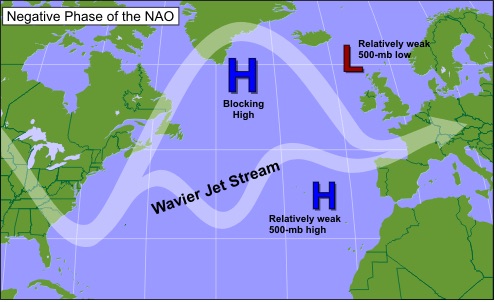Climate in different parts of the world is undergoing a warming trend, but also significant interdecadal variations that compensate, or exacerbate the former. These variations are associated not only with changes in the radiative forcing, but also to natural variability in the atmospheric and oceanic circulation patterns. Can multi-annual variations in the frequency of North Atlantic atmospheric blocking and mid-latitude circulation regimes be skillfully predicted? Recent advances in seasonal forecasting have shown that mid-latitude climate variability does exhibit significant predictability. Decadal predictions fill the gap between assessing long-term climate trends (climate projections) and predicting short-term climatic anomalies (seasonal forecasting), thus targeting near-term regional climatic anomalies with multi-annual lead time and responding to an increasingly needed service to society.
A study recently published on the Nature Research Journal Climate and Atmospheric Science led by the CMCC Foundation (in particular, with the contribution of the CMCC scientists Panos Athanasiadis, lead author of the study, Alessio Bellucci and Stefano Tibaldi from CSP – Climate Simulations and Predictions Division) illustrates the latest breakthrough in the field of decadal predictions, with a special focus on the documented predictability for the North Atlantic Oscillation (NAO) and blocking in the North Atlantic.
The authors made use of a large ensemble of decadal predictions and found remarkable skill in reproducing the observed multi-annual variations of wintertime blocking frequency over the North Atlantic and of the North Atlantic Oscillation (NAO) itself. Therefore, skillfully predicting the decadal fluctuations of blocking frequency and the NAO may be used in statistical predictions of near-term climate anomalies, and it provides a strong indication that impactful climate anomalies may also be predictable with improved dynamical models.




